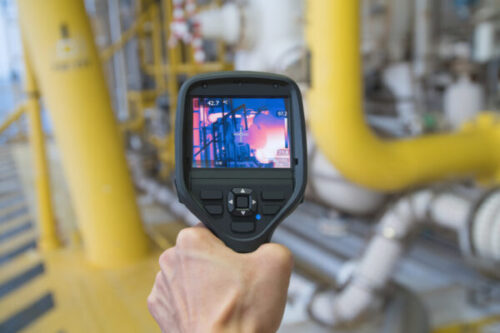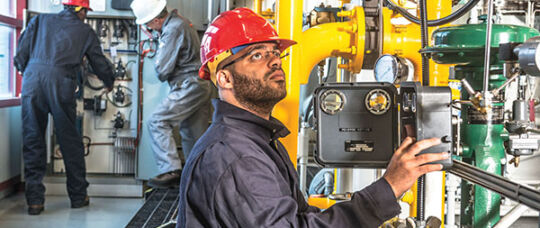Roar Solutions Fundamentals Explained
Roar Solutions Fundamentals Explained
Blog Article
Roar Solutions Things To Know Before You Get This
Table of ContentsThe Basic Principles Of Roar Solutions Roar Solutions for BeginnersSee This Report on Roar Solutions
In such an atmosphere a fire or explosion is possible when 3 standard problems are satisfied. This is commonly described as the "harmful area" or "combustion" triangle. In order to protect installments from a possible surge a technique of analysing and classifying a potentially unsafe location is needed. The objective of this is to make certain the right choice and installation of tools to inevitably avoid an explosion and to make sure safety of life.
(https://www.40billion.com/profile/91601565)
No equipment should be mounted where the surface temperature of the devices is higher than the ignition temperature level of the offered hazard. Below are some common dust unsafe and their minimal ignition temperature level. Coal Dirt 380C 225C Polythene 420C (thaws) Methyl Cellulose 420C 320C Starch 460C 435C Flour 490C 340C Sugar 490C 460C Grain Dust 510C 300C Phenolic Material 530C > 450C Aluminium 590C > 450C PVC 700C > 450C Residue 810C 570C The possibility of the hazard being present in a concentration high sufficient to trigger an ignition will certainly vary from area to area.
In order to identify this threat an installation is divided right into locations of threat relying on the amount of time the unsafe is present. These locations are referred to as Zones. For gases and vapours and dusts and fibres there are 3 areas. Area 0 Zone 20 A harmful ambience is highly likely to be existing and might exist for lengthy periods of time (> 1000 hours each year) or also continuously Zone 1 Zone 21 A harmful environment is possible however not likely to be existing for lengthy periods of time (> 10 450 C [842 F] A category of T6 indicates the minimum ignition temperature is > 85 C [185 F] Unsafe area electrical equipment perhaps developed for use in greater ambient temperatures. This would showed on the ranking plate e.g. EExe II C T3 Ta + 60C( This suggests at 60C ambient T3 will certainly not be surpassed) T1 T1, T2, T3, T4, T5, T6 T2 T2, T3, T4, T5, T6 T3 T3, T4, T5, T6 T4 T4, T5, T6 T5 T5, T6 T6 T6 A T Class score of T1 means the optimum surface area temperature level generated by the tool at 40 C is 450 C. Presuming the connected T Class and Temperature level score for the equipment are ideal for the area, you can always make use of an instrument with a more rigid Division rating than needed for the location. There isn't a clear response to this question unfortunately. It truly does depend on the sort of devices and what fixings need to be performed. Devices with specific examination treatments that can't be executed in the field in order to achieve/maintain 3rd party ranking. Need to return to the manufacturing facility if it is prior to the devices's solution. Field Fixing By Authorised Worker: Difficult screening might not be called for nonetheless particular treatments might require to be followed in order for the tools to maintain its third event ranking. Authorised personnel must be employed to carry out the job properly Repair should be a like for like substitute. New element need to be taken into consideration as a straight substitute calling for no unique testing of the equipment after the repair work is total. Each tool with a hazardous score should be reviewed independently. These are outlined at a high degree below, however for even more comprehensive information, please refer directly to the guidelines.
Unknown Facts About Roar Solutions
The equipment register is a detailed database of equipment documents that consists of a minimum set of areas to determine each thing's location, technological parameters, Ex lover classification, age, and ecological data. This info is essential for monitoring and managing the equipment properly within harmful locations. In contrast, for periodic or RBI tasting inspections, the grade will certainly be a combination of Detailed and Close inspections. The proportion of In-depth to Close assessments will certainly be figured out by the Equipment Threat, which is evaluated based upon ignition risk (the chance of a resource of ignition versus the possibility of a flammable environment )and the dangerous area classification
( Zone news 0, 1, or 2). This variation will certainly additionally affect the resourcing needs for work preparation. Once Lots are defined, you can establish sampling plans based upon the example dimension of each Whole lot, which describes the variety of arbitrary devices items to be examined. To establish the needed sample dimension, 2 aspects need to be examined: the dimension of the Whole lot and the group of evaluation, which indicates the degree of initiative that should be used( reduced, typical, or boosted )to the examination of the Great deal. By combining the category of assessment with the Whole lot dimension, you can then develop the appropriate rejection requirements for an example, meaning the permitted number of damaged products discovered within that example. For more details on this procedure, please refer to the Energy Institute Standards. The IEC 60079 typical suggests that the optimum interval between inspections need to not exceed 3 years. EEHA examinations will additionally be carried out beyond RBI campaigns as component of scheduled upkeep and equipment overhauls or repair work. These assessments can be attributed towards the RBI sample dimensions within the affected Whole lots. EEHA assessments are carried out to determine mistakes in electric tools. A weighted scoring system is important, as a solitary item of equipment might have numerous mistakes, each with varying levels of ignition risk. If the combined rating of both assessments is less than two times the mistake rating, the Whole lot is regarded acceptable. If the Great deal is still considered undesirable, it needs to go through a complete evaluation or validation, which might activate more stringent assessment procedures. Accepted Great deal: The reasons for any kind of mistakes are determined. If an usual failing setting is found, additional tools may need evaluation and repair work. Faults are identified by extent( Safety and security, Stability, Housekeeping ), guaranteeing that immediate issues are analyzed and addressed quickly to mitigate any impact on safety or procedures. The EEHA data source should track and record the lifecycle of faults in addition to the rehabilitative activities taken. Executing a robust Risk-Based Examination( RBI )technique is crucial for ensuring compliance and security in handling Electrical Devices in Hazardous Locations( EEHA) (eeha courses). Automated Fault Scoring and Lifecycle Monitoring: Effortlessly take care of mistakes and track their lifecycle to boost inspection accuracy. The intro of this assistance for risk-based examination better reinforces Inspectivity's setting as a best-in-class solution for governing compliance, in addition to for any kind of asset-centric examination use instance. If you want finding out more, we invite you to ask for a demonstration and discover just how our solution can change your EEHA management processes.
Roar Solutions - The Facts

In regards to eruptive threat, a dangerous area is an environment in which an eruptive environment exists (or may be expected to be present) in quantities that need unique precautions for the construction, setup and use of devices. eeha. In this article we check out the challenges dealt with in the work environment, the threat control procedures, and the needed proficiencies to function safely
It issues of modern-day life that we produce, save or handle an array of gases or liquids that are regarded flammable, and a variety of dusts that are deemed flammable. These substances can, in particular problems, create explosive ambiences and these can have significant and awful effects. Most of us recognize with the fire triangle eliminate any kind of one of the three elements and the fire can not happen, yet what does this mean in the context of unsafe locations? When damaging this down into its simplest terms it is basically: a combination of a specific quantity of release or leakage of a particular substance or product, blending with ambient oxygen, and the visibility of a source of ignition.
In most instances, we can do little regarding the levels of oxygen airborne, but we can have significant influence on sources of ignition, for instance electric equipment. Hazardous areas are documented on the hazardous area category drawing and are recognized on-site by the triangular "EX" indication. Right here, amongst other essential info, zones are split into 3 types depending upon the threat, the chance and duration that an eruptive ambience will certainly exist; Zone 0 or 20 is considered the most harmful and Area 2 or 22 is regarded the least.
Report this page